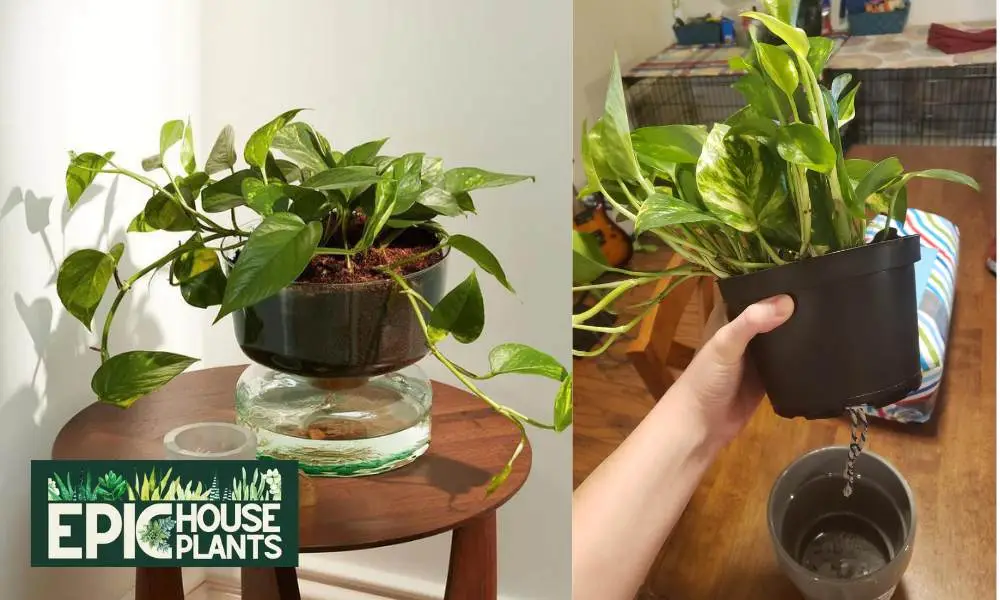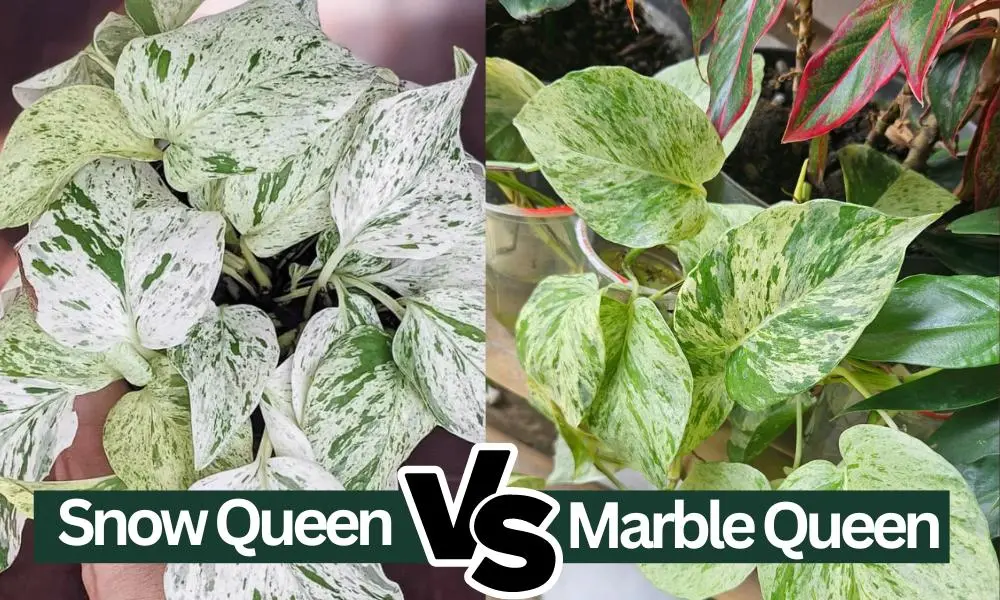In this article, we’ll explore the types of light that pothos thrive in, as well as how to create the ideal lighting environment for your indoor pothos.
Plus, we’ll discuss the signs that indicate your photos aren’t getting enough light or are receiving too much. So, let’s get started and shed some light on this topic!
Understanding The Types of Light for Houseplant

Light is like food for plants, playing a crucial role in photosynthesis, the process by which they convert sunlight, water, and carbon dioxide into energy.
Just like humans have dietary needs, different houseplants thrive under different lighting conditions. Understanding these variations is key to keeping your leafy friends happy and healthy.
During photosynthesis, light energy excites chlorophyll molecules within the plant’s leaves. This triggers a series of chemical reactions that ultimately produce glucose (sugar), the plant’s primary energy source.
Remember, when it comes to measuring light intensity, the unit used is lux. Lux is a measure of illuminance, or the amount of light that falls on a surface. Here is a general guideline for the lux levels associated with different light conditions:
| Light Type | Lux Range |
|---|---|
| Direct light | 10,000 lux or more |
| Bright indirect light | 5,000 – 10,000 lux |
| Medium indirect light | 1,000 – 5,000 lux |
| Low light | Less than 1,000 lux |
It is important to identify the light requirements of your houseplants and to provide them with the right amount of light. If you are unsure about the light requirements of a particular plant, you can ask your local nursery or do some research online.
Ideal Lighting For Pothos
If you’re wondering how to give your Pothos the best lighting conditions for thriving growth, we’ve got you covered. Let’s dive into the ideal aspects of light intensity and duration to keep your Pothos happy and healthy!
Bright Indirect Light is the Way to Go!
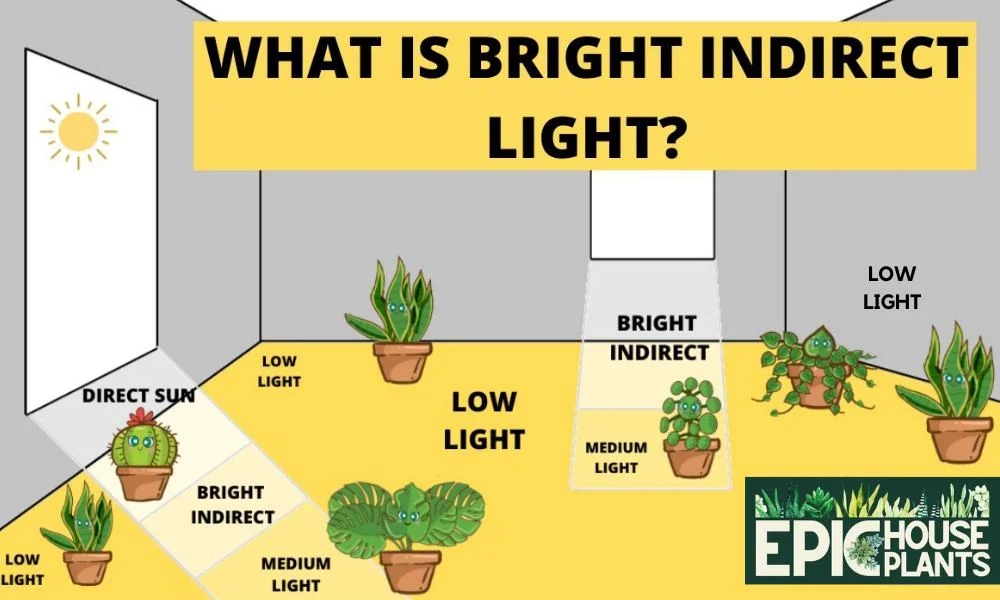
Pothos plants absolutely adore bright indirect light. Picture a room with north-facing windows or a spot that receives filtered sunlight through sheer curtains. It’s like the perfect lighting for reading a book without straining your eyes. That’s the kind of light your Pothos craves!
While direct sunlight near a window might be a bit too intense, moving your Pothos a little further away will provide that filtered light it needs. And if you place your Pothos underneath sheer curtains, it’ll create a cozy and indirect light environment that your plant will absolutely adore.
Duration of Light Exposure
Now, let’s talk about how long your Pothos should bask in that lovely light. The ideal duration of light exposure can vary depending on factors like the season, plant maturity, and variety.
During active growth periods
Aim for 8-12 hours of bright indirect light. This mimics the long daylight hours in their natural tropical environment. As fall and winter roll in and daylight hours shorten, 6-8 hours of bright indirect light will still do the trick.
But if natural light is limited, don’t worry! You can always supplement with grow lights to keep your Pothos foliage vibrant and prevent any stretching.
Younger Pothos plants
Need a bit more light, around 10-12 hours, to ensure optimal growth and leaf development. On the other hand, older plants can tolerate slightly lower light levels, around 8-10 hours, without any major issues.
Author Note:
If you have a Pothos variety with stunning variegation, like the Golden Pothos, it’ll need a bit more light, around 8-10 hours, to maintain those gorgeous leaf patterns. But if you have a Pothos with solid green leaves, like the Jade Pothos, it can handle slightly less light, around 6-8 hours.
Signs Pothos Doesn’t Get Enough Light
If your pothos isn’t getting enough light, it might start showing some signs that it’s feeling a bit down. Keep an eye out for these clues:
| Sign | Description |
|---|---|
| Stretching out | The stems might get longer, and the leaves might spread out more as the plant reaches for more light. |
| Smaller leaves | New leaves might be smaller than the older ones. |
| Slow growth | Your pothos might not be growing as quickly as usual, or it might even seem like it’s stopped growing altogether. |
| Fading color | The leaves might lose their vibrant green color and start looking a bit pale or dull. |
| Loss of variegation | If you have a variegated pothos, the white or yellow parts of the leaves might start to fade or become less noticeable. |
| Yellowing and drooping | The lower leaves might turn yellow and droop down. |
If you suspect your pothos needs more light, try these friendly tips:
- Find a brighter spot: Look for a place with bright indirect light, like near a north-facing window or under sheer curtains.
- Give it a spin: Rotate your plant regularly so that all sides get an even amount of light.
- Consider grow lights: If natural light is limited, especially during the winter, grow lights can be a big help.
- Feed it well: During the growing season, a balanced fertilizer can give your pothos the boost it needs, even in lower light conditions.
Signs Pothos Gets Too Much Light
On the other hand, if your pothos is getting too much light, it might start to show some signs of stress. Here’s what to look out for:
| Sign | Description |
|---|---|
| Brown patches and crispy edges | If the leaves start developing dry, brown patches, it might be getting too much direct sunlight. |
| Yellowing and bleaching | Leaves, especially near the veins, might turn yellow or lose their vibrant color due to sunburn. |
| Curling leaves | The leaves might start curling inwards or downwards to protect themselves from intense light. |
| Slower growth | Your pothos might not be growing as quickly, or it might even seem like it’s stopped growing altogether due to stress from too much light. |
| Leaf drop | The plant might start shedding more leaves than usual, especially the damaged ones. |
| Dryness | Despite regular watering, the leaves might appear dry and brittle due to increased water loss caused by too much sunlight. |
If you think your pothos is getting too much light, here are some friendly suggestions:
- Find a new spot: Move your plant to a place with bright indirect light instead of direct sunlight, like near east or west-facing windows filtered by sheer curtains.
- Take it slow: If your plant has been in direct sunlight for a while, try to gradually get it used to lower light levels to avoid stressing it out further.
- Keep an eye on it: Watch how your pothos responds to the changes and adjust its position if needed.
Choosing Best Spot with The Best Light For Pothos
So, you want to find the perfect spot with the best light for your lovely pothos plant? No worries, I’ve got you covered with some easy steps to help you out!
Step 1: Check Out Potential Locations
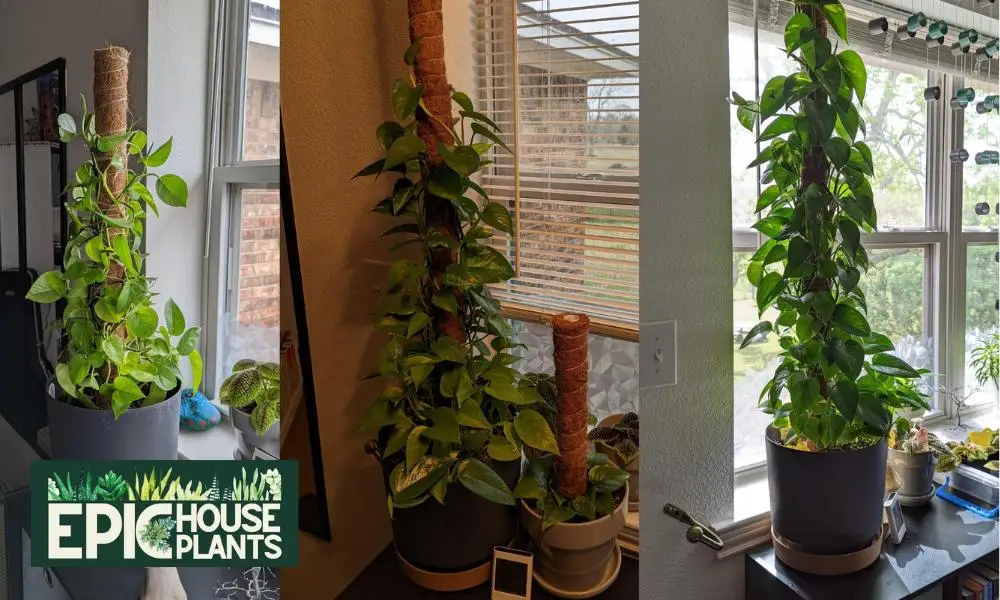
- North-facing Window: This is a great option for your pothos as it provides consistent, bright indirect light all day long.
- East or west-facing Window: These are good choices too, just keep an eye on the afternoon sun, it can get a bit intense. You can use sheer curtains to filter the light if needed.
- South-facing Window: Try to avoid direct sunlight, especially during the peak hours. You can place your pothos a bit further away from the window or use something to filter the light significantly.
Step 2: Consider Other Spots
- Under sheer curtains: This can create a nice, diffused light that your pothos will love.
- A few feet away from a south-facing wall: Depending on your location, your pothos can receive some filtered afternoon light here.
- Sheltered outdoor areas: If you have a patio with shade from trees or filtered morning/late afternoon sun, that can work too.
Step 3: Keep an Eye Out and Make Adjustments
- Watch out for signs of too little or too much light (we’ve mentioned these in the previous responses).
- A north-facing window with bright indirect light is usually a safe bet.
- If you notice any signs of light stress, just move your plant to a different spot or use some grow lights to give it a little extra boost.
- Make sure to adjust the placement as needed to keep that consistent light exposure all year round.
Extra Tips:
- Give your pothos a little spin every now and then to make sure it gets even light and grows nice and evenly.
- During the winter months or in low-light situations, you can use some grow lights to keep your pothos happy.
- Pothos are pretty adaptable, but giving them the best light possible will really make them shine and keep them healthy and beautiful.
Artificial Light For Growing Pothos Indoor
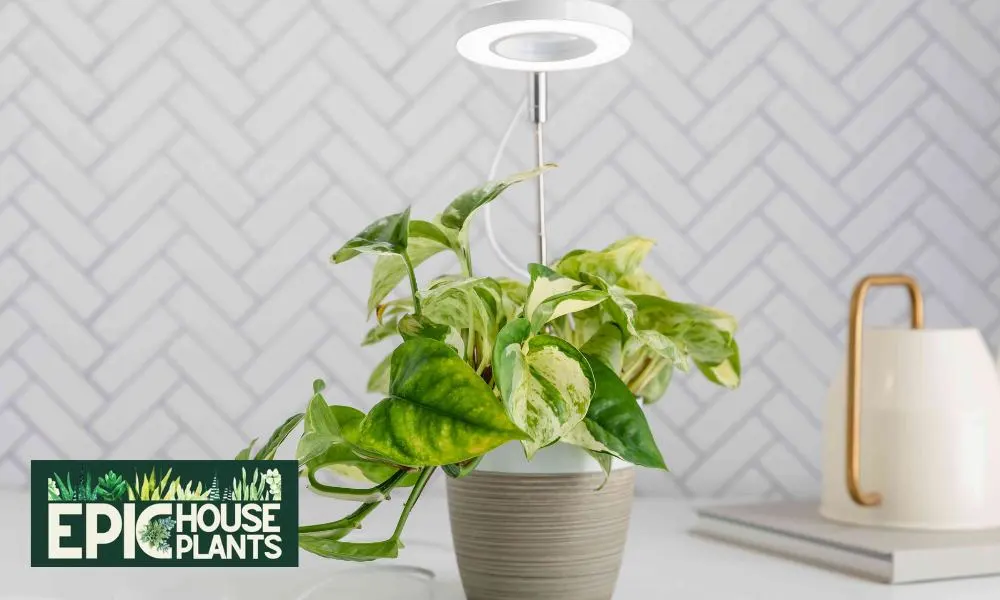
When it comes to providing artificial light for your indoor pothos plants, there are a few options to consider:
1. Fluorescent Tubes
These are a budget-friendly choice and come in cool white or full spectrum options. For the best results, go for the cool white or full spectrum tubes. If you want higher efficiency, you can opt for T5 or T8 tubes.
2. LED Grow Lights
These lights are energy-efficient and provide specific spectrums that cater to your plant’s growth needs. Blue and red wavelengths are particularly important for photosynthesis. While LED grow lights may be a bit pricier than fluorescent tubes, they are a worthwhile investment.
Now that you know the types of artificial light available, let’s dive into choosing the right light for your pothos plants:
| Consideration | Recommendation |
|---|---|
| Pothos Variety | If you have variegated varieties, they might need slightly more light to maintain their vibrant colors. |
| Light Intensity | Aim for a light intensity of around 5,000-10,000 lux, similar to bright indirect sunlight. You can use a light meter to measure it accurately if you’re unsure. |
| Light Spectrum | For overall plant health, choose full spectrum lights or a combination of blue and red LEDs. |
| Distance from Plant | Follow the manufacturer’s recommendations regarding the distance between the light and your pothos plant to prevent leaf burn. Start further away and make adjustments if necessary. |
Here are a few extra tips to help you make the most of your artificial lighting:
- Try to mix artificial light with any natural light you have during the day for the best results.
- Use artificial light to boost the brightness in darker areas.
- It’s best not to depend only on artificial light for long periods, so try to get some natural light whenever you can.
- Keep your light fixtures clean to make sure they give off the best light possible.
Conclusion
In wrapping up our exploration of pothos light requirements, it’s clear that finding the perfect balance is the secret to unlocking the full potential of this resilient houseplant.
Pothos is a champ at adapting and can thrive in both well-lit areas and cozy nooks with limited sunlight. With this insight, plant lovers can create spaces that promote growth, lush foliage, and turn their homes into vibrant green havens.
Author

Pudji Haryanto
Pudji Haryanto is a writer and urban farmer with a passion for cultivating plants. He has over 15 years of experience in agriculture and currently manages a 65,000 square foot rice-field and yard filled with various plants, including vegetables, spices, flowers, and garden plants.

